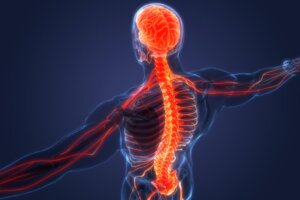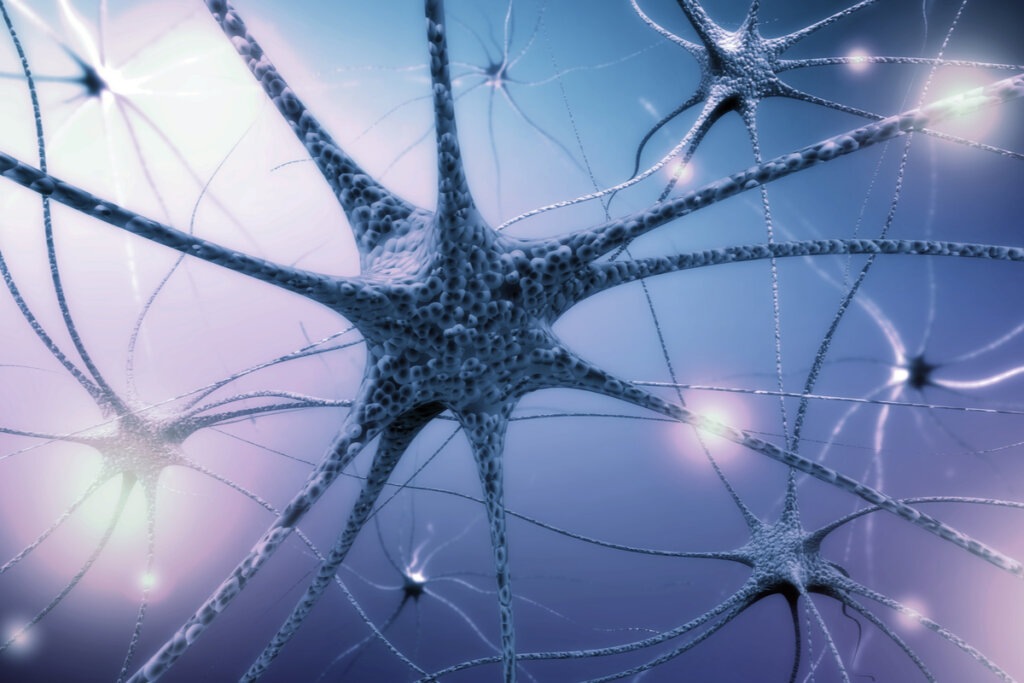Sympathetic and Parasympathetic Nervous Systems


Written and verified by the psychologist José Padilla
Our sympathetic and parasympathetic nervous systems favor the interaction of our bodies with the world via neurons.
As a whole, the nervous system is a complex network of structures and processes. Its main mission is to control and regulate the functioning of the organs and systems and coordinate their respective relationships. It’s also in charge of mediating relations with the external environment and processing the electrical and chemical signals received from the sense organs.
At a ‘simple’ level of operation, the nervous system is responsible for regulating the internal environment and controlling the autonomic and endocrine responses. Meanwhile, at a more complex level, it’s responsible for communication with the external environment via sensory and motor functions (Merino and Noriega, 2011).
The nervous system is organized to recognize any disturbances, alterations, or changes that occur in the internal and external environment. It’s also equipped to predict, evaluate, and interpret information and respond accordingly through changes in the muscles or glands.
The system is divided into two large subsystems:
- The central nervous system (CNS). Made up of the brain and spinal cord.
- The peripheral nervous system (PNS). Located outside the brain and spinal cord, it’s made up of two parts. These are the somatic nervous system and the autonomic nervous system (also known as the neurovegetative system).

The autonomic nervous system: sympathetic and parasympathetic
The autonomic nervous system (ANS) operates without conscious and voluntary control. Regulation of blood pressure, gastrointestinal responses to food, urinary bladder contraction, eye focusing, and thermoregulation are just a few of the many homeostatic functions regulated by this system (McCorry, 2007).
The ANS plays an important role in our interaction with our environment. In fact, it regulates organic processes in order for us to adjust our functioning to the demands of our environment. As we live in environments that are continually changing from one state to another, we need these types of systems. They allow us to maintain states of internal balance (homeostasis) (Del Abril, et al., 2009).
The sympathetic nervous system
The sympathetic nervous system (SNS) is the part of the autonomic nervous system that prepares the body for action in stressful moments. It raises the metabolic rate and involves many of the body’s resources to cope with the situation (Feldman, 2014).
This system triggers the fight-or-flight responses to threatening situations that require an immediate response. Some of its main effects, when activated, are as follows:
- It increases heart rate.
- Increases blood pressure by constricting blood vessels.
- Increases blood glucose.
- Decreases peristaltic movements.
- Dilates the pupils to improve vision.
- Relaxes the bronchi to increase airflow to the lungs.
- Decreases the secretion of saliva.
- Contracts the pilomotor muscles (goosebumps).
- Increases sweating.
- Causes the secretion of adrenaline.
The parasympathetic nervous system
The parasympathetic nervous system (PNS) is opposite to the SNS. That said, they both promote balance in the body. After all, a state of constant arousal or activation such as that caused by the SNS wouldn’t be adaptive for any organism. Therefore, another system must counteract it when appropriate.
The PNS is the part of the autonomic nervous system that calms the body after a stressful situation in which the sympathetic nervous system participated. It’s the means by which we conserve energy resources (Feldman, 2014). Some of its main effects when activated, are as follows:
- Slows heart rate.
- Lowers blood pressure.
- Increases peristaltic movements.
- Contracts the pupils.
- Constricts the bronchi.
- Increases salivation.
- Relaxes the pilomotor muscles.
- Decreases sweating.
Differences between the sympathetic and parasympathetic nervous system
Now you know some of the main differences between the sympathetic and parasympathetic nervous systems, we’ll explain a few more.
- The parasympathetic system stimulates activities that take place under normal conditions to ensure long-term well-being (for example, digestion). On the other hand, sympathetic activation serves to deal with short-term emergencies (Redolar et al., 2010).
- The sympathetic nerves stimulate, organize and mobilize energy resources in emergency situations. The parasympathetic nerves act by conserving energy (Pinel, 2007).
- Sympathetic changes indicate psychological activation. Parasympathetic changes indicate psychological rest (Pinel, 2007).
- The sympathetic nervous system originates from the thoracic and lumbar regions of the spine (T1-L2). The parasympathetic nervous system originates from the brain stem (cranial nerves III, VII, IX, and X) and the sacral region of the spinal cord. (S2-S4).
- The sympathetic nervous system is distanced from the target organs, forming the paravertebral chain. The parasympathetic system is a short distance from or located in the target organs and doesn’t form any chain.
- Postganglionic axons in the SNS are relatively long and myelinated, whereas in the PNS they’re short and unmyelinated.
- The neurotransmitter released by postganglionic neurons on the target organs of the SNS is adrenaline while, for the PNS, it’s acetylcholine.

Antagonistic systems
The sympathetic and parasympathetic nervous systems are antagonistic. Thanks to their coexistence we have balanced bodies capable of adapting to extremely different circumstances. Indeed, our nervous systems are capable of putting our bodies in really different states. For example, they let us relax while we’re reading or quickly cross the street when a car is coming along. The wonderful thing about the existence of these two systems is the way they work so effectively together.
Both systems work involuntarily. Therefore, we have no voluntary influence on their activation. However, both systems are absolutely necessary for our survival and adaptation to the various circumstances that we face in our daily lives.
All cited sources were thoroughly reviewed by our team to ensure their quality, reliability, currency, and validity. The bibliography of this article was considered reliable and of academic or scientific accuracy.
- Alshak, M. N. (2019). Neuroanatomy, sympathetic nervous system. StatPearls. https://www.ncbi.nlm.nih.gov/books/NBK542195/
- Del Abril, A., Ambrosio, E., De Blas, M., Caminero, A., García, C., Higuera, A. Y De Pablo. (2009). Fundamentos de psicobiología. Sanz y Torres.
- Feldman, R. S. (2014). Psicología con aplicaciones en países de habla hispana (10ª ed.). McGraw-Hill.
- Merino, J y Noriega, M. J. (2011). Fisiología general: el sistema nervioso autónomo. https://ocw.unican.es/pluginfile.php/879/course/section/967/Tema%25209-Bloque%2520II-Sistema%2520Nervioso%2520Autonomo.pdf
- LeBouef, T., Yaker, Z., & Whited, L. (2021). Physiology, Autonomic Nervous System. StatPearls. https://www.ncbi.nlm.nih.gov/books/NBK538516/#:~:text=The%20parasympathetic%20nervous%20system%2C%20also,the%20pupil%20for%20near%20vision
- McCorry, L. K. (2007). Physiology of the Autonomic Nervous System. American Journal of Pharmaceutical Education, 71(4), 78. Doi:10.5688/aj710478
- Pinel, J. (2007). Biopsicología(6ª ed.). Pearson.
- Redolar, D., Moreno, A., Robles, N., Soriano, C., Torras, M. y Vale, A. (2010). Fundamentos de psicobiología. Editorial UOC.
- Tindle, J., & Tadi, P. (2021). Neuroanatomy, parasympathetic nervous system. In StatPearls [Internet]. StatPearls Publishing.
This text is provided for informational purposes only and does not replace consultation with a professional. If in doubt, consult your specialist.








